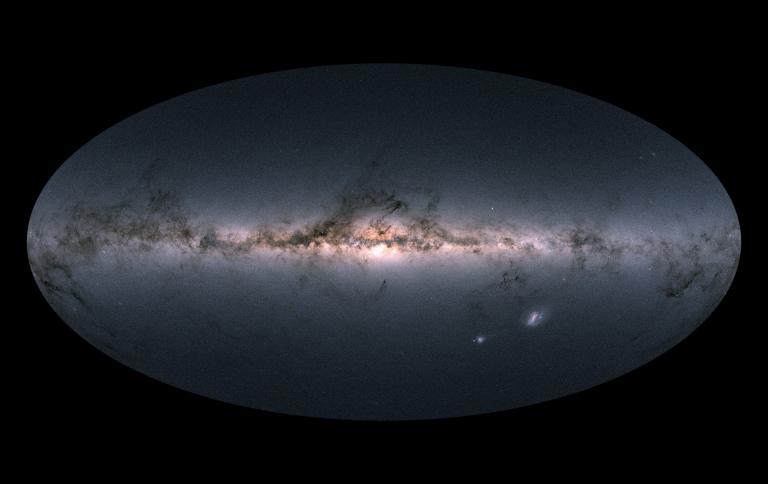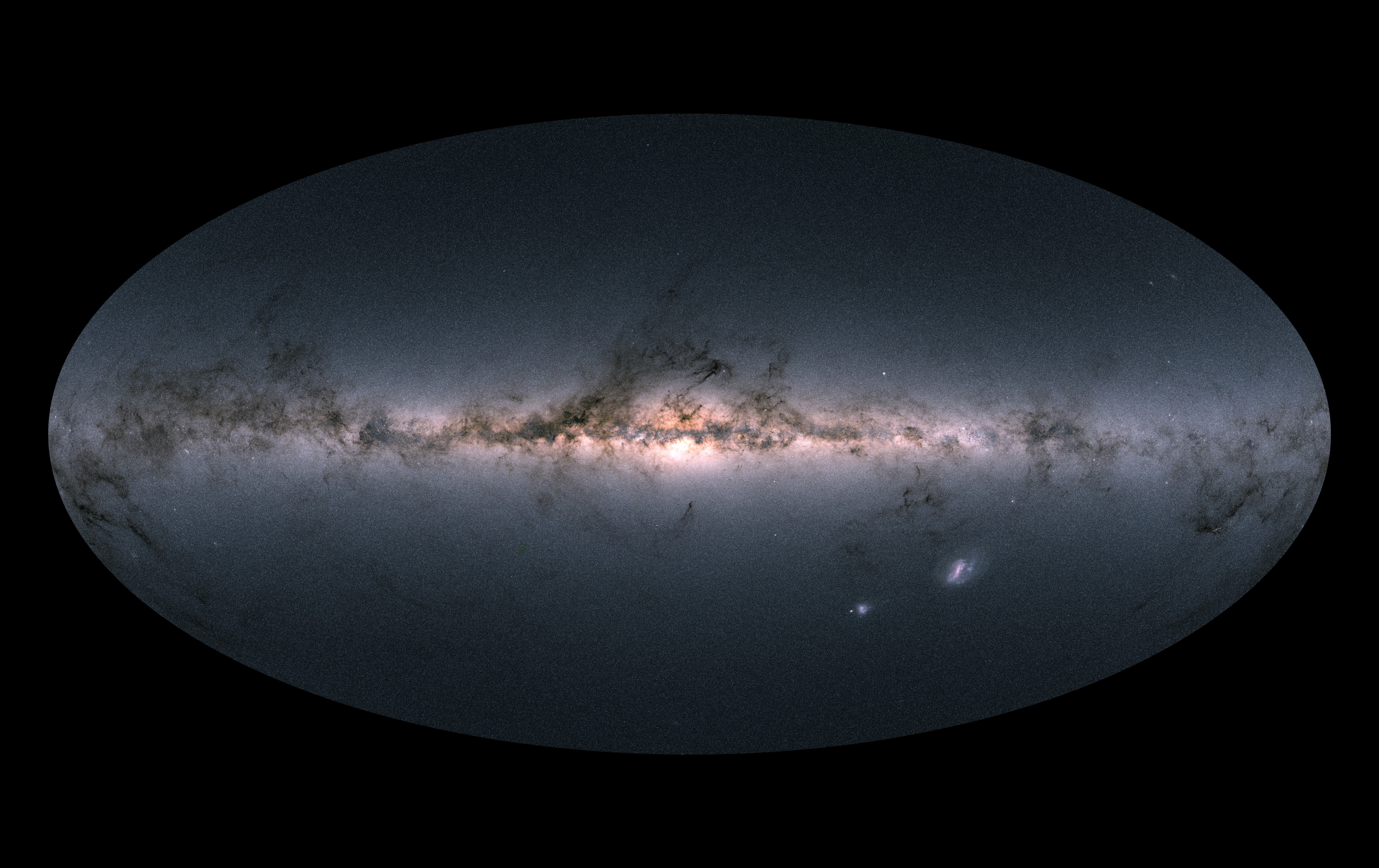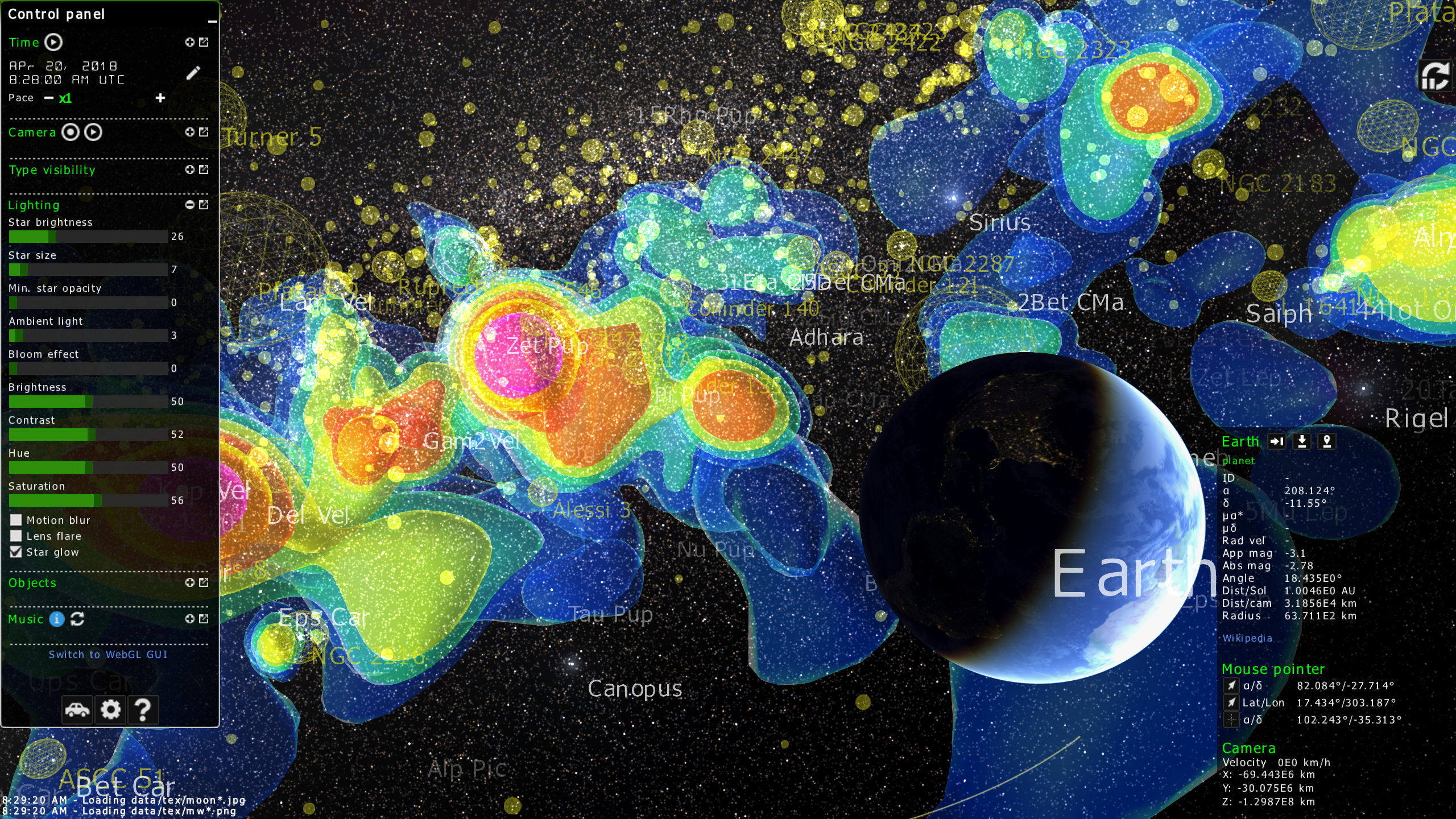 News
NewsGaia's three-dimensional sky
A flythrough of the galaxy based on the distribution of hot massive stars proves a spectacular movie.
 News
NewsA flythrough of the galaxy based on the distribution of hot massive stars proves a spectacular movie.


Annotated density map from GaiaSky
Image Credit: GaiaSky/K. Jardine
A flythrough of the galaxy based on the distribution of hot massive stars proves a spectacular movie.
Gaia's second data release in April this year provided another level of precision in the locations and velocities of Milky. Way stars. Now a software engineer and amateur astronomer has used medical imaging to visualise the density of the galaxy around the Sun, producing a spectacular map stretching 10,000 light years away from the Sun, and one that you can visualised in three. dimensions by (virtually) flying though it.
Kevin Jardine used the same sort of software as is used in medical imaging such as in computer tomography. In that context, it is used to identify tissues of different density. In the Milky Way, Jardine applied it to the distribution of OB stars, hot massive and, crucially, short-lived stars that track the density of the galaxy.
The resulting image shows isodensity surfaces bounding regions of high density, shown in pinky/purple, intermediate density in pale blue and violet and low density areas in dark blue. Green regions mark interstellar dust and red, areas of ionised gas, taken from other surveys. The radiating spokes are an artefact arising from lines of sight from Earth.
As well as this image Jardine has produced a spectacular fly-through movie of the region around our Sun.
Details of the image can be found as part of GaiaSky, including an interactive version of the image.
If you would like to submit an article to A&G Forum then please go here.